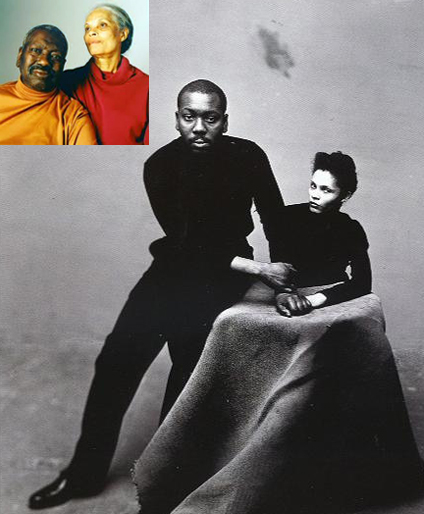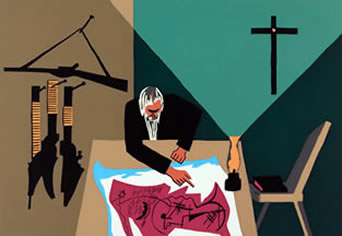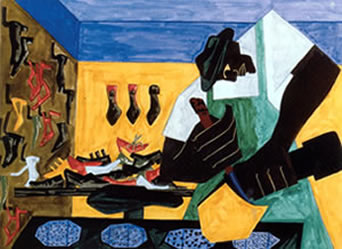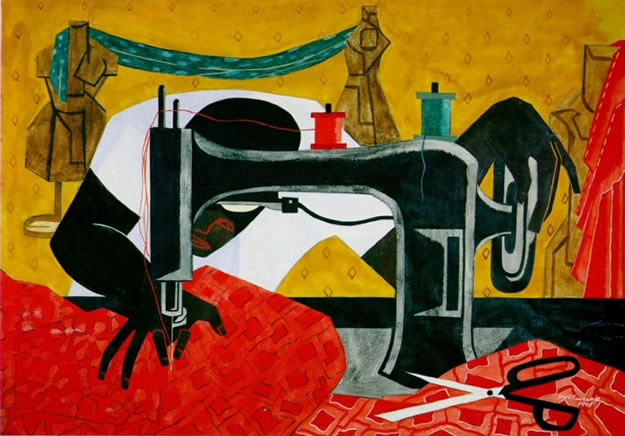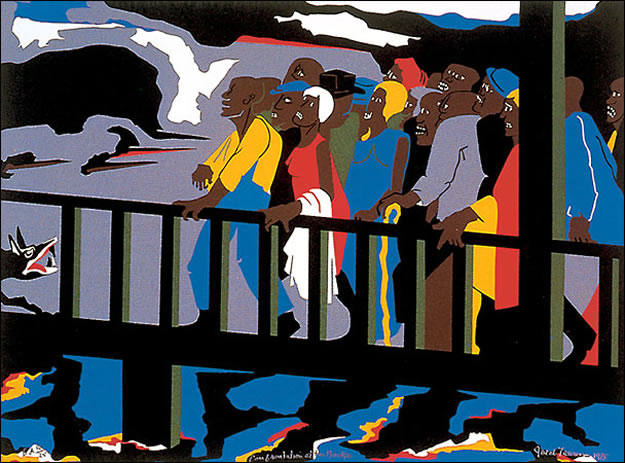Jacob Lawrence20th Century American Master |
|
Jacob Lawrence (September 7, 1917 – June 9, 2000) is among the best-known 20th century African American painters, a distinction shared with Romare Bearden. Though he referred to his style as "dynamic cubism," he also said his primary influence were the shapes and colors of Harlem. Lawrence was only in his twenties when his "Migration Series" made him nationally famous. The series depicted the epic Great Migration of African Americans from the rural South to the urban North. It was featured in a 1941 issue of Fortune Magazine. In the 1940s Lawrence was given his first major solo exhibition at the Museum of Modern Art in New York City and became the most celebrated African American painter in the country. The NAACP honored Lawrence as an artist, teacher, and humanitarian and awarded him the Spingarn Medal in 1970. In 1974 the Whitney Museum of American Art in New York held a major retrospective of his work, and in 1983 he was elected to the American Academy of Arts and Letters. |
Lawrence married fellow artist, painter, Gwendolyn Knight in 1941. They remained married until his death in 2000. |
When Lawrence died on June 9, 2000, the New York Times called him "One of America's leading modern figurative painters" and "among the most impassioned visual chroniclers of the African-American experience. |
|---|
Jacob Lawrence, Print No. 13, from The Legend of John Brown, 1977 |
Jacob Lawrence,The Shoemaker, from The Migration Series, 1945 |
|---|
Lawrence Paints History Throughout his lengthy artistic career, Lawrence concentrated on depicting the history and struggles of African Americans and important periods in history. The artist was twenty-one years old when his series of paintings of the Haitian general Toussaint L’Ouverture was shown in an exhibit at the Baltimore Museum of Art. This impressive work was followed by a series of paintings of the lives of Frederick Douglass and Harriet Tubman, as well as a series of pieces about the abolitionist John Brown. The Legend of John Brown series, is now on view through June 2012, at the Virginia Museum of Fine Arts. Lawrence was only twenty-three when he completed the sixty-panel set of narrative paintings entitled Migration of the Negro, now called The Migration Series. The series, a moving portrayal of the migration of hundreds of thousands of African Americans from the rural South to the North after World War I, was shown in New York, and brought him national recognition.
|
|---|
From The Migration Series
Jacob Lawrence, The Seamstress, 1946, gouache on paper |
|
|---|
